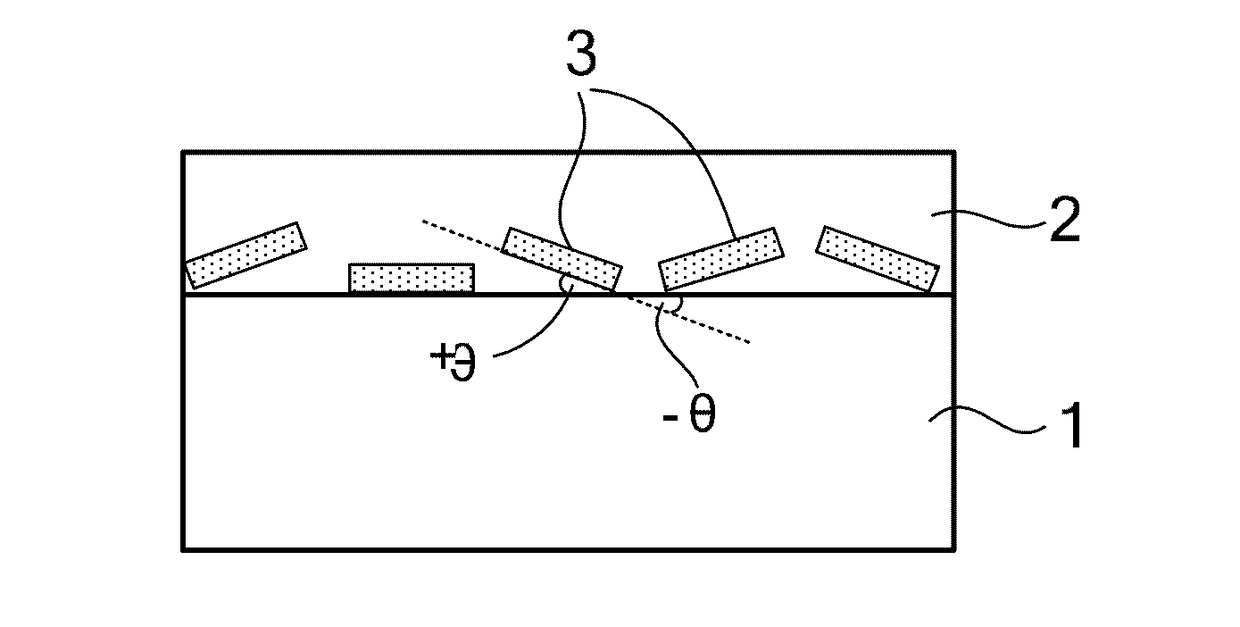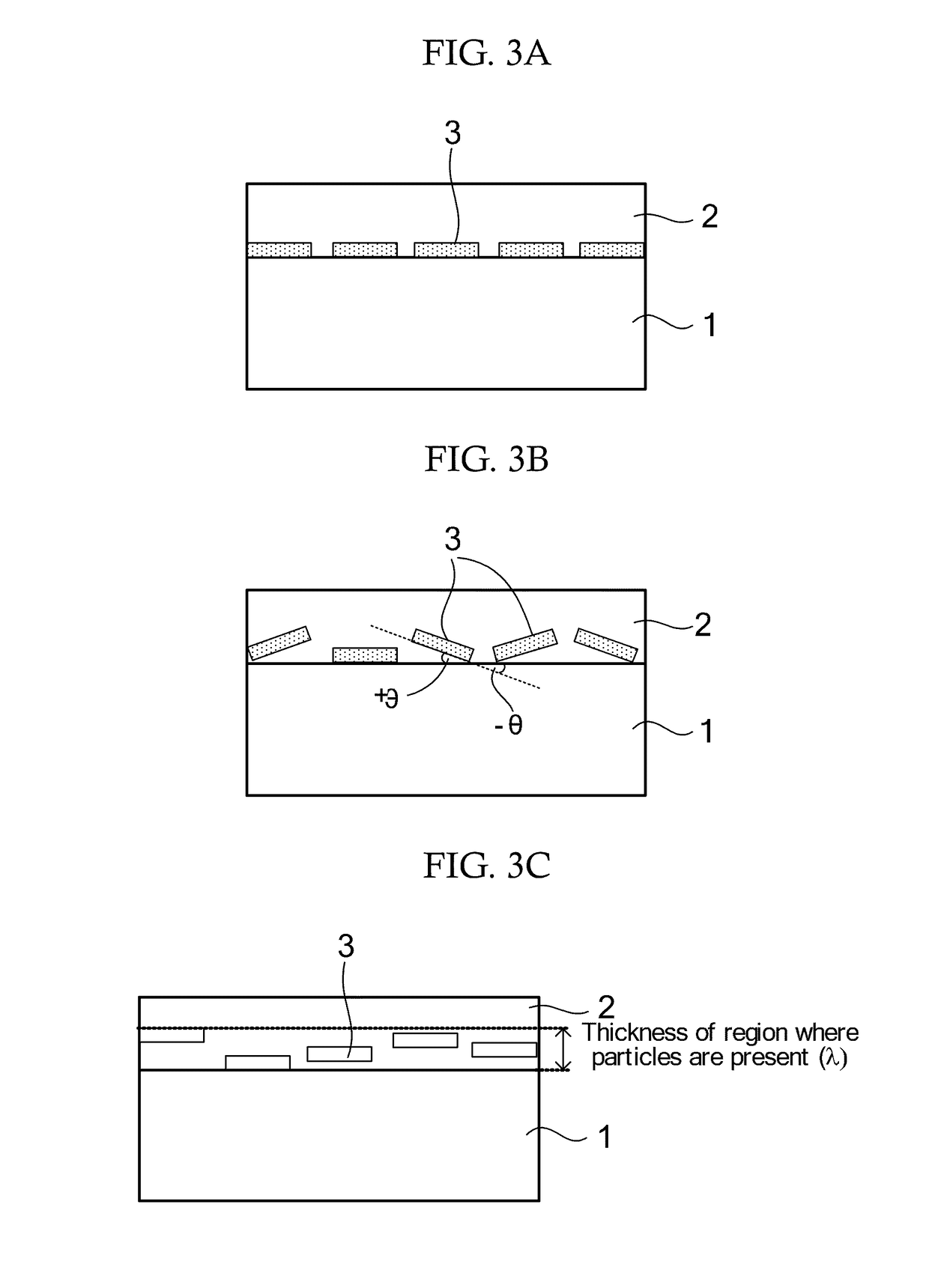Heat ray-shielding material
a technology of heat rays and materials, applied in the field of heat rayshielding materials, can solve the problems of difficult to control the size and shape of particles, low-e glass has a problem with low radio wave transmission, and films have problems with low etc., to achieve excellent visible light transmission and radio wave transmission, wide reflection frequency band, and wide reflection wavelength selectivity
- Summary
- Abstract
- Description
- Claims
- Application Information
AI Technical Summary
Benefits of technology
Problems solved by technology
Method used
Image
Examples
example 1
Synthesis of Metallic Flat Particle
[0102]A 150 mM hydrazine aqueous solution (0.75 mL) was added, without stopping, into a solution containing the following components, and stirred at 25° C. and at 1,000 rpm for 2 hours to obtain a turbid blue particle-dispersion liquid.[0103]ion-exchanged water . . . 762 g[0104]silver nitrate (produced by Wako Junyaku Co., Ltd.) . . . 12.7 mg[0105]sodium citrate trihydrate (produced by Wako Junyaku Co., Ltd.) 100.6 mg[0106]EDTA4 sodium acetate (produced by Wako Junyaku Co., Ltd.) . . . 5.0 mg
[0107]It was confirmed that hexagonal-shaped flat particles made of silver having an average particle diameter (average circle-equivalent diameter) of 40 nm (hereinafter, referred to as “hexagonal shaped flat particles”) were formed in the particle dispersion liquid. Also, the thickness of the hexagonal-shaped flat particles was measured by an atomic force microscope (NANOCUTE II, manufactured by SEIKO INSTRUMENTS INC.). As a result, it was found that the thick...
example 25
[0133]A heat ray-shielding material was produced in the same manner as in Example 5, except that after Ag flat particles were synthesized as shown in Table 1-B, when producing a substrate for heat ray-reflecting material, an Ag flat particle-dispersion liquid was delivered by drops to a surface of the substrate, and then dried in an oven at 100° C. for 30 minutes, without the substrate being dipped in the Ag flat particle-dispersion liquid.
example 26
[0134]A heat ray-shielding material was produced in the same manner as in Example 5, except that after Ag flat particles were synthesized as shown in Table 1-B, when producing a substrate for heat ray-reflecting material, an Ag flat particle-dispersion liquid was delivered by drops to a surface of the substrate, and then dried in an oven at 50° C. for 30 minutes, without the substrate being dipped in the Ag flat particle-dispersion liquid.
PUM
 Login to View More
Login to View More Abstract
Description
Claims
Application Information
 Login to View More
Login to View More - R&D
- Intellectual Property
- Life Sciences
- Materials
- Tech Scout
- Unparalleled Data Quality
- Higher Quality Content
- 60% Fewer Hallucinations
Browse by: Latest US Patents, China's latest patents, Technical Efficacy Thesaurus, Application Domain, Technology Topic, Popular Technical Reports.
© 2025 PatSnap. All rights reserved.Legal|Privacy policy|Modern Slavery Act Transparency Statement|Sitemap|About US| Contact US: help@patsnap.com



